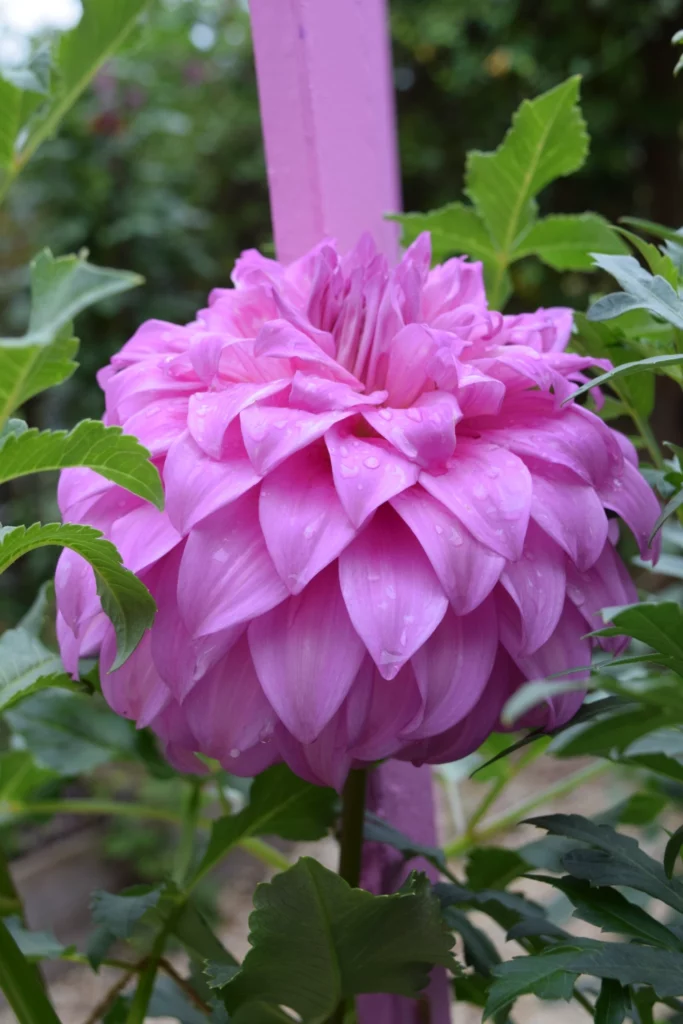
Summer staking keeps the garden looking fresh for the rest of the gardening year. There is a nice way to do it and a sloppy way. Learn what you can do to make your garden sail through summer and into fall.
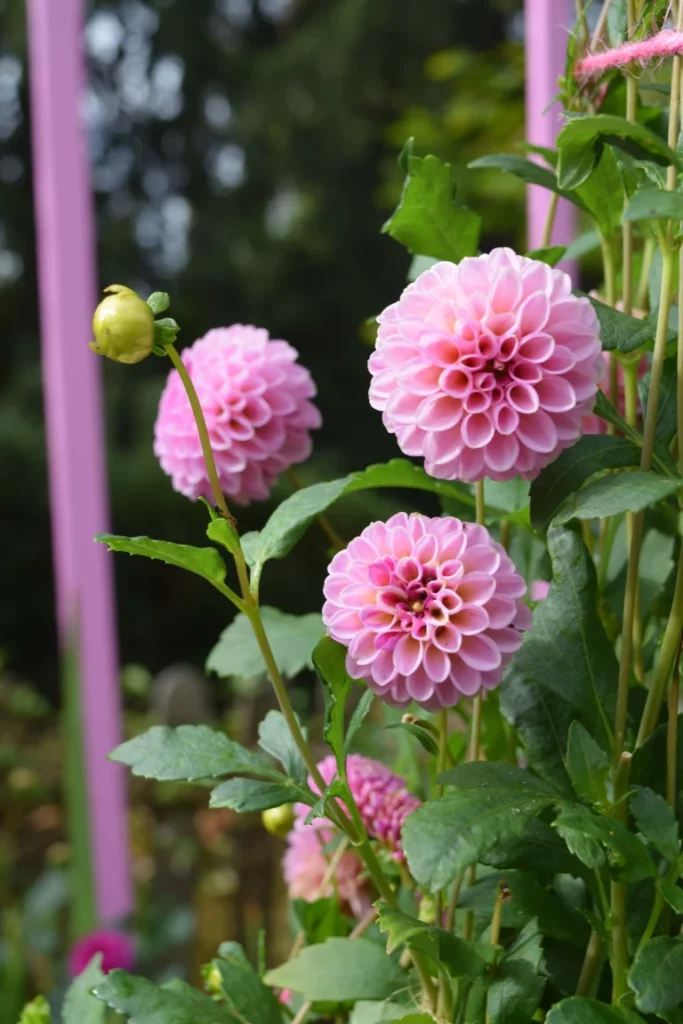
Pink pompon dahlia flowers in the Cutting Garden at Northview look great when paired with pink stakes
‘Perhaps the Vital Word for August is Stake’
The quote above is from one of my favorite early twentieth century female garden writers, Mrs. Francis King. She was a gardening expert based in Michigan and then New York State. She was a prolific garden author who wrote many books and magazine articles.

Mrs. Francis King, garden writer
The whole quote is,
‘Perhaps the vital word for August is “stake.”…. Putting small twiggy bare branches into the Michaelmas daisy plants as Miss Jekyll suggests, is a capital plan for those spreading, many-stemmed plants. If this is done early, and the branch run into the ground at an angle leaning forward, the plant will soon wipe out by its growth all traces of support.’
Mrs. Francis King – The Flower Garden Day by Day
1927 – Page number 125
The quote above from the indefatigable Mrs. Francis King (aka Louisa), is a reminder to us to take some time to look after our gardens this month. Staking is one of those jobs. I have to say that I am not a great fan of staking plants here at Northview. I do like tall plants a lot, but I want them to lean against a fence in a naturalistic manner or support each other as they grow. There are certain plants that I do stake and the Michaelmas daisies, or asters, mentioned in the quote above are one of them.

The Flower Garden Day by Day by Mrs. Francis King
The trouble with staking is that ideally it should be invisible. No one will be able to see your brilliant handiwork. You want to find a way of keeping your tall plants staying upright with sticks, bamboo canes, string, or other purchased supports that hold plants up from within and underneath.
Good staking goes unnoticed. Bad staking always gets noticed.
When done early in the growth of a plant, the sticks and strings can be hidden. When done after a plant has flopped the result are usually more string, more sticks, and a less attractive plant. I call it ‘the trussed turkey look’. Not an attractive metaphor – but I think that plants where the first thing you see are the stakes look awful.
Over my many years of garden visiting I have seen some dreadful examples of staking. I include the photo below not to point fingers but to highlight some of the pitfalls of staking. The intention was great. The height wrong.
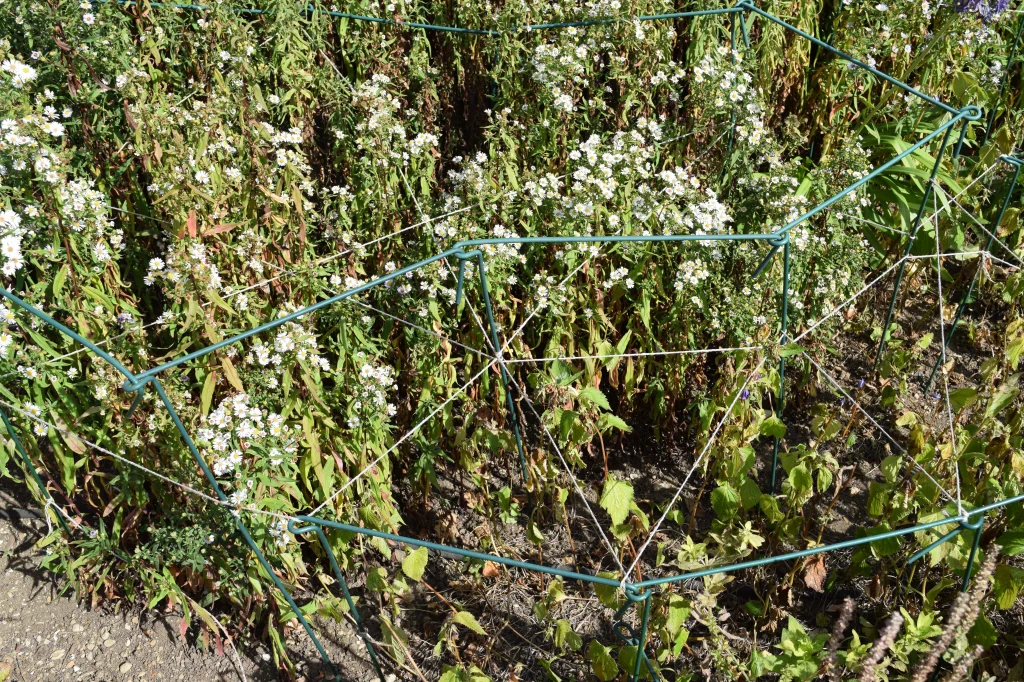
Know the height of the plant before you stake it. This staking is too high up and too obvious for the plant
Even by August the asters are still manageable, by September and October they have sprouted into five- or six-feet leggy monsters that threaten to engulf your whole flower bed. What can you do about this. As stated above, start early with the maintenance. Even if you are reading this in real time and it is August read the next paragraph to learn what you can do next year in May.
The Chelsea Chop/ The Memorial Day Chop
One way that we use to control tall summer into autumn flowering plants is to do a ‘Chelsea chop’ (as the Brits call it – to coincide with the late May Chelsea Flower Show in London). I have taken to calling it the ‘Memorial Day chop’ so that American audiences at my lectures know what I mean – it is the same thing. We cut back plants that have multiple growing points by a third or a half of the vegetative growth. What this does is reduce the overall height of the plant at flowering time, encourages branching, and causes it to bloom a little later. The plants that benefit from this chopping are the Prairie plants that emerge from the ground with lots of herbaceous shoots. (Do not try this with plants that have a single stem or ones that flower before late summer).
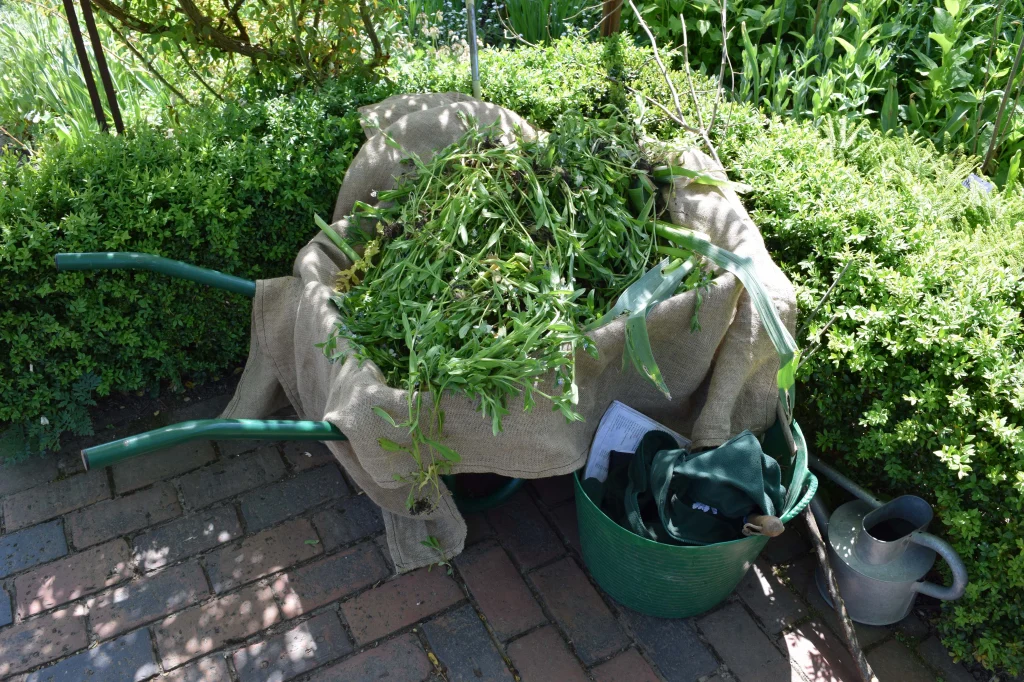
Cut back tall, vigorous, late summer plants that have many growing points in late May to reduce the eventual height so that they do not flop so much. This also delays flowering.
Natural Twigs are the Best
The next thing we do is use twigs that we save from trees in winter or others that fall during the year. The fat end is pushed deep into the soil and the branches are poked amongst the leaves of the growing aster (or any other plant that needs support). In England they save branches from nut trees. We use branches from our beech trees. They are slender yet strong and work well. They are removed from the beds at the end of the growing season.
Wooden Poles – Easy, Cheap, and Timeless
For tall plants that are being used for production of vegetables or cut flowers it is hard to beat the thick, square, wooden stake hammered into the ground next to the plant. In the photo below that comes from the Garden Magazine, July 1913 the solid post is perfect for tomatoes. It is still one of the simplest and cheapest ways to stake.
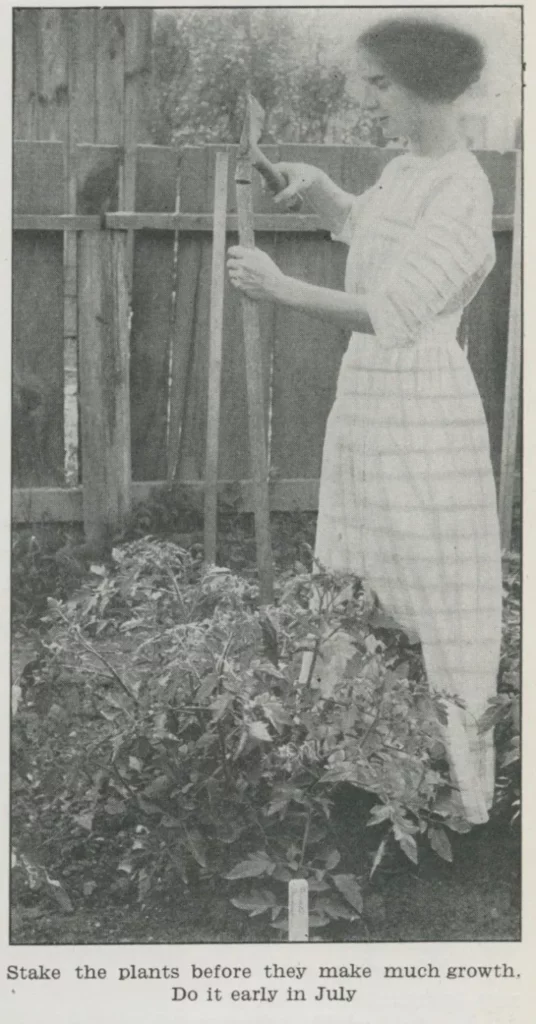
Garden Magazine 1913 showing one of the best simple ways of staking tomatoes.
I use these wooden supports for dahlias and have them painted in various colors to suit the garden, my mood, or the color scheme. You have to tie the plant to it as it grows. We use biodegradable twine in a variety of colors.
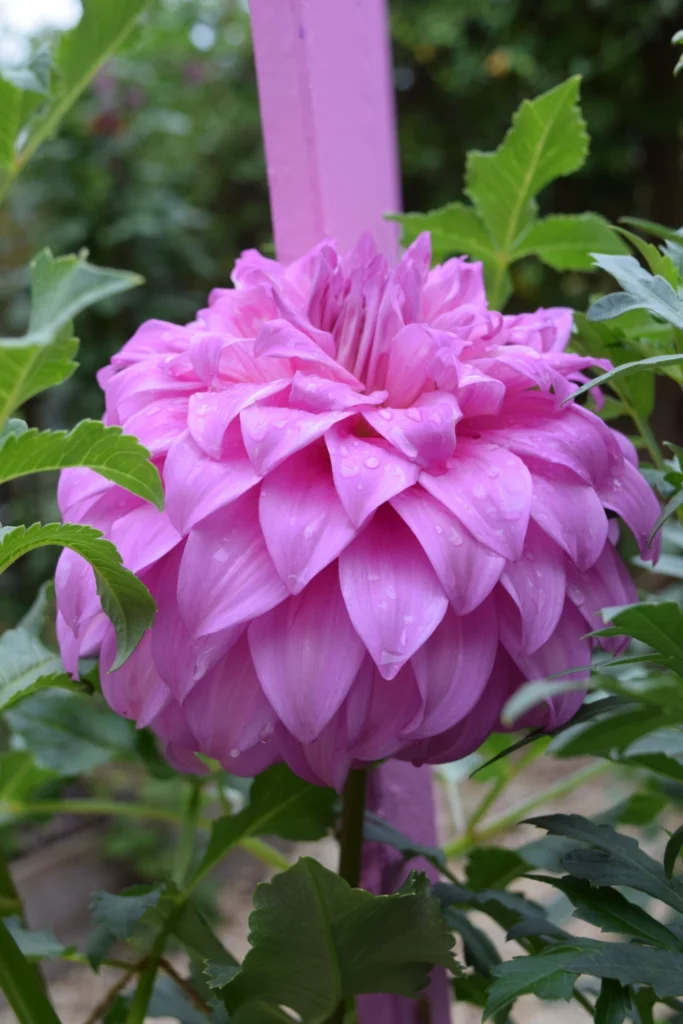
I love this color in the garden. Did I match the stake to the flower or the flower to the stake?
By the way, the observant followers would have noticed that I was going to talk about color trends in gardening this month. I have pushed that off to next month. Staking got in the way!

Have a great August and happy staking. Your garden will thank you.
Bye for now Gardening Friends.
Jenny Rose Carey




Leave a Reply